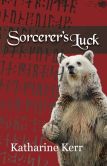Warning: parody and snark ahead, in response to this silliness, a petition to prevent something that doesn’t and won’t actually exist.
Originally, I had intended to gather signatures for my parody, but a wise friend pointed out how that could be counterproductive, adding to the sense of an Us vs. Them schism within SFWA. Which would have been ironic, considering how I was grumbling about such attitudes earlier in the week.
I like SFWA. They do a lot of really good work. It annoys me when someone who isn’t even a member stirs up this kind of silliness, creating conflict and bad press over nonexistent “hypothetical” boogeymen or issues that were dealt with — including the solicitation of input from the entire membership — a year ago.
I like RWA too, for that matter. I love hanging out with romance writers, and I’ve learned a lot from talking to them. I have zero patience for people who, despite never having read the genre, go around dissing romance as nothing but mantitty and bodice-ripping and simplistic formulaic fiction. (Also, I wish my genre sold that well!)
My response is not meant to belittle anyone or anything except for the original, ridiculous petition and the individual who put it forth.
#
RWA President Secretly Censoring Romance Writers Report?
By Jim C. Hines
Terry McLaughlin, President of the Romance Writers of America, has obviously been part of an ongoing policy of P*litically C*rrect censorship in the organization’s organization’s professional publication, a professional magazine for professionally writing professionals, the Romance Writer’s Report., the Romance Writers Report.
As a professional author who once read a romance novel, I was shocked when I investigated this organization I don’t actually belong to and found covers such as this gracing their magazine:

Yes, they’re wonderfully clean and professional-looking covers. But I visited the page on the RWA website where the Romance Writers Report is described as, “a trade publication that mails monthly and covers all aspects of the romance writer’s career. Free with your membership.” (Emphasis added.)
This mission statement is, on the surface, seemingly harmless. Unless, that is, you are aware of the ongoing history of cover art selected for the Romance Writers Report and my selective oversimplification and misrepresentation of that history! Because the alleged meaning of “all aspects” here doesn’t mean what it’s commonly taken to mean, which becomes clear when you look at these covers and see the meaning that’s missing.
The problem can be summed up in one word: mantitty.
It’s the lack of mantitty that made me sit up and rub my eyes to make sure I wasn’t seeing what I thought I wasn’t seeing. These covers represent “all aspects” of a romance writer’s career? Say whaaaaaa…? As an amateur cover model, I’m quite familiar with the manly pecs and flowing man-locks that are such an essential part of my selective interpretation of the romance genre’s history and roots.
[SELF-CENSORED EDITED TO REMOVE SECTION ABOUT HOW GAY MEN LIKE MANTITTY TOO SO THIS IS TOTALLY DISCRIMINATORY AGAINST THEM]
There is a tradition in this country of people misunderstanding the First Amendment and crying “Freedom of speech!” when a professional organization chooses not to publish content it deems unprofessional. As a Writers’ Organization, RWA should be at the front line in the deep, wet trenches of this battle, fighting in their torn uniforms, with sweat glistening on their firm muscles, their piercing blue eyes fixed upon the Enemies of Freedom. Enemies who had once been allies on that winter night so long ago, when firm hands slipped beneath the tight waistband of our jeans to grasp our tight buttocks and pull us close—
…sorry. Where was I? Oh, right. Freedom! The heart of the matter is that RWA has been committing an ongoing offense against freedom of the press – its own press! – through this blatant self-censorship of mantitty!
So I clasped my pen firmly in my strong, eager fingers and spilled my ink onto the page.
[Email to RWA President Terry McLaughlin, February 11, 2014]
“Hi Terry 🙂
Why have you chosen to TRAMPLE THE FREE SPEECH AND FREEDOM OF THE PRESS by not putting rock-hard abs and chiseled man-chests on the cover of RWR?
Why do you hate freedom? And mantitty?
Sincerely,
Jim C. Hines”
I received no response. I blame censorship. (Or the fact that I didn’t actually email her.)
In the light of the preceding unsubstantiated fearmongering and hot-button buzzwords that don’t actually exist in RWA’s policies or procedures, I strongly object to the RWA’s ongoing mantitty-censorship. Specifically, I have the following objections:
- “Romance writer’s career” is so vague it leaves many questions unanswered. What is romance? Who is a writer? Why are you so determined to portray these “writers” as professionals instead of the boa-wearing, bon-bon munching stereotypes of old?
- What about the advertisers? Will you be auditing them to make sure the purity of your publication isn’t soiled by mantitty-tainted dollars?
- If you continue this Politically Correct censorship of mantitties, aren’t you creating a slippery slope that leads to DEATH PANELS?
In view of these considerations, I ask that the President and Board of the RWA (1) put out an open call for mantitty and (2) begin a conversation about romance cover art, because this topic has never before been discussed in a venue where I was able to satisfactorily explain to everyone else why they were wrong.
[SELF-CENSORED EDITED TO REMOVE SECTION ABOUT HOW HOLDING A PROFESSIONAL MAGAZINE TO PROFESSIONAL STANDARDS IS JUST LIKE SLAVERY!]
It cannot be emphasized too strongly here that the issue is not one of Left vs. Right, SF/F vs. Romance, Peanut Butter vs. Jelly, Kirk vs. Picard, or Fabio vs. Hugh Jackman. The only issue here is a First Amendment one that lovers of both Fabio and Jackman should be able to agree on. When our forefathers signed the Constitution of the United States of America, it was with the understanding that Thomas Jefferson was going to get to see some chiseled, powder-wig-wearing man-chest.
“Take your stinking paws off me, you damn dirty ape!”
—Charlton Heston (actor, and apparently the kind of guy you quote in petitions)
It is my hope that RWA President Terry McLaughlin will immediately kill any “professional” guidelines or oversight in the organization’s publications that might censor or infringe upon any RWA member’s Freedom to Enjoy Mantitty (and throw out any and all respect they’ve fought so hard to earn) in the pages of the Romance Writers Report.







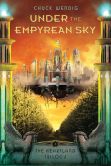 Let’s start with
Let’s start with  Next up is the award-winning God’s War
Next up is the award-winning God’s War 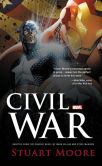 Finally, there’s Stuart Moore’s Civil War
Finally, there’s Stuart Moore’s Civil War 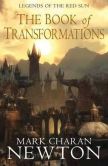 I identify publicly as trans*. I don’t know where on the spectrum I fit, but somewhere in the trans*/gender-queer area. I’m female identified, but I won’t go into the other details. Anyway. I find it so, so, so, so hard to find trans* characters I can identify with in books. Heck, I struggle to find trans* characters in books full stop.
I identify publicly as trans*. I don’t know where on the spectrum I fit, but somewhere in the trans*/gender-queer area. I’m female identified, but I won’t go into the other details. Anyway. I find it so, so, so, so hard to find trans* characters I can identify with in books. Heck, I struggle to find trans* characters in books full stop. Katie is a fan of genre fiction, gaming and animation, and she can be found on Twitter as
Katie is a fan of genre fiction, gaming and animation, and she can be found on Twitter as 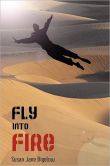 Because of that, I decided to take a risk. My own books were finally coming out, published by the excellent and progressive small press
Because of that, I decided to take a risk. My own books were finally coming out, published by the excellent and progressive small press 

